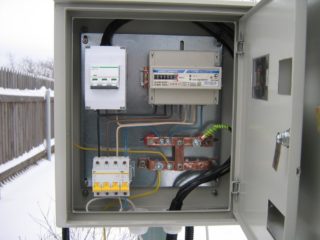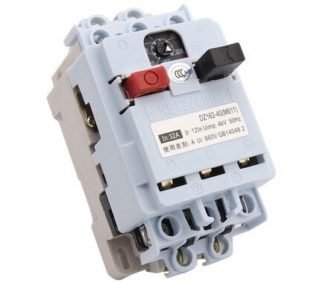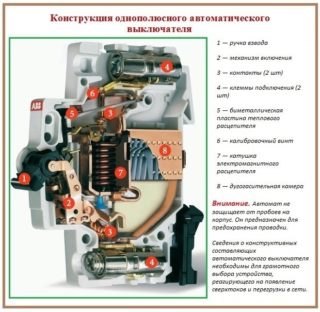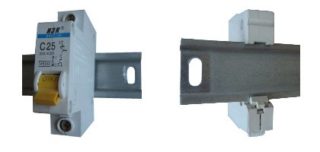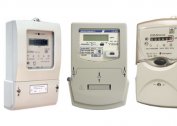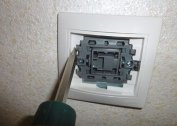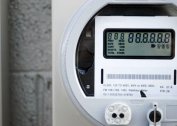The process of installing the machine on the meter or in the distribution panel, as a rule, does not cause difficulties and takes a little time. The main thing is to correctly connect all conductive wires, otherwise the device will fail quickly enough. In order to avoid problems when connecting, it is recommended that you first familiarize yourself with the principle of operation and the connection diagram of the electrical device, as well as prepare all the necessary equipment.
Types of Circuit Breakers
There are 3 types of circuit breakers. They are able to work with loads of different sizes, and differ from each other in their design features.
- Aerial electric machines. These electrical devices can be equipped with 3-4 poles and withstand a total current of up to 6.3 kA. Installed in electrical circuits with high power installations.
- Cast switches, which are designed to work in industrial networks with currents up to 1 kA. Made in a molded case, thanks to which they got such a name.
- Modular AV devices are used in household networks, where currents of small quantities flow. As a rule, they have 1-2 poles and a width that is a multiple of 1.75 cm.
There is another kind of circuit breakers, which are called differential circuit breakers. Their difference from analogues is that the device is additionally equipped with an RCD.
An integral part of the machines are trip units. They are necessary in order to break this circuit when the permissible values of the parameters of the electric network are exceeded, stopping the supply of electricity. There are two types of releases - thermal and electromagnetic. In the first case, the machines work almost instantly, and the latter will take a little time.
The principle of operation of protective switches
As a rule, automatic machines are switched off manually (remotely or by means of a drive), and in case of violation of the operating rules - automatically. Violation of the operating mode means a decrease or increase in voltage to critical levels, the formation of overcurrents. Each machine is equipped with releases of maximum voltage, and some minimum.
Depending on the functionality, the circuit breakers are divided into automatic machines of reverse power, undervoltage and maximum current.
Overcurrent machines are necessary for the automatic opening of the electrical circuit when overloads of the set limits are formed in it, as well as short circuit currents. They replace the fuse and the circuit breaker, which provides selective protection in case of emergency or emergency situations.
If the working environment differs from the normal one, for example, high humidity, electrical structures must additionally be placed in special cabinets or drawers of a chemically resistant or dustproof design.
How to connect the machine
In the initial position there is a distribution panel in which all electrical products and wires will be installed - incoming and outgoing from the consumer.
Electricians have developed a general algorithm for connecting a two-pole circuit breaker on a distribution panel:
- The power supply to the apartment or house is turned off.You can verify the absence of voltage using special equipment - a multimeter or using an indicator screwdriver.
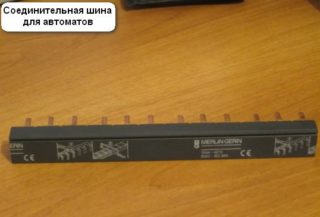
- The circuit breaker is mounted on a special landing rail and is securely locked with latches. You may not need to use a DIN rail during installation, but this complicates the process.
- The conductors of incoming and outgoing conductive cables are stripped by approximately 8-10 mm.
- An input zero and a phase are wound into the two upper clamps.
- Outgoing zero and phase, respectively, start up in the two lower holes.
- After connecting, carefully check the reliability of the fixation. To do this, carefully take the conductor and stir in different directions. If the core does not slip out of the hole, the connection is secure. If you still jumped out, you need to tighten the screw more tightly.
- At the end of all electrical work, voltage is applied to the network and the operability of the electrical structure is checked.
If you strictly follow the step-by-step installation algorithm, there should not be any difficulties.
Connection diagram of machines in the apartment after the counter
The circuit breaker must be connected to the meter immediately after it. The phase wire that exits the meter is connected to a circuit breaker. The zero wire does not need to be inserted into the machine, it is switched with a special block in the distribution panel, which is conventionally called the zero. The circuit breaker serves as the same protective electrical device as the switching one.
Connecting the machine to the shield
The connection diagram of the machine to the distribution panel may seem complicated. Circuit breakers in the panel must be connected to a special cut, which goes to all phase loads. Also, all outgoing machines that are installed in parallel in the circuit are switched from the input machine in this shield. To the upper contacts (holes) is connected the phase wire of the input automaton.
In this case, it is important to adhere to the rule of selectivity, according to which more than one protection system is used in the switchboard, it follows that the higher circuit-breaker at the rated breaking current must be larger, unlike the lower one. The zero lead-in wire should be switched without any breaks to the special block with which the switchboard is equipped. It is called block 0. To it, the outgoing cables and neutral conductors are connected to the loads.
Quite often, the cable is equipped with a triple residential grounding. In this case, a special additional block of land is provided. It is required to bring to it all the earth veins that depart from cables and outgoing wires.
The consequences of incorrect connection
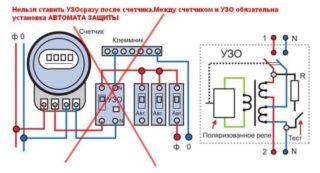 If the machine is not connected correctly, this can cause a quick failure of the device and a short circuit leading to a fire. To eliminate the likelihood of unpleasant consequences, it is recommended that you familiarize yourself with the most common errors when connecting the machine:
If the machine is not connected correctly, this can cause a quick failure of the device and a short circuit leading to a fire. To eliminate the likelihood of unpleasant consequences, it is recommended that you familiarize yourself with the most common errors when connecting the machine:
- The power cable is wound from below. According to the rules of the PUE, this installation option is not prohibited, but electricians recommend safety contact from above for safety and quality work.
- The contacts are too tight with the fixing screw. This must not be allowed, otherwise the integrity of the insulating layer and the conductive core of the cable may be damaged, and the case itself may be deformed.
- Incorrectly connected conductors. When connecting, it is important to comply with strict compliance: the phase is connected under the phase, and the zero is under zero (provided that a two-pole switch is used).
- To save money, some electricians install two single-pole machines at the same time instead of one two-pole machine.This is prohibited because phase and zero must be disconnected at the same time.
- When fixing the cores, not bare contacts, but insulating material, get into the seat. Before connecting, the wire must be stripped as much as the supporting documentation of the model requires. If the insulation is pressed down with a screw, the contact will weaken, the core will heat up. In the future, this may cause device malfunction and fire.
- Wrong choice of automatic device. It is possible that it will be designed for less power than it is in fact.
When calculating the circuit breaker, the obtained values are always rounded up.
Circuit breakers are an indispensable thing in a modern apartment and house, which are equipped with a large number of expensive household appliances and electrical appliances. It is recommended to purchase them in large chain stores or from official representatives of trusted and well-established manufacturers. When buying, it is important to make sure that you have all the required supporting documentation.
